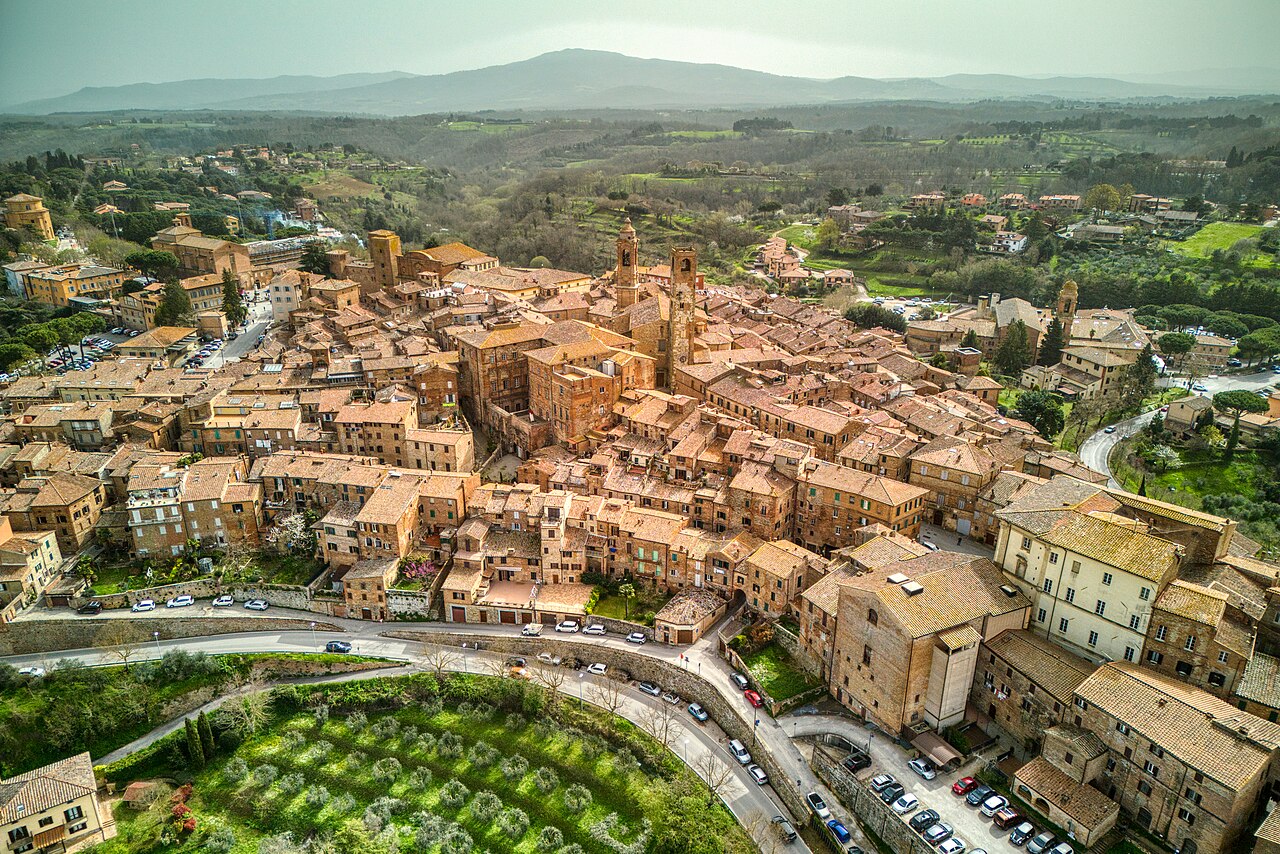Città della Pieve
A short itinerary in the historic center

ph credits: https://commons.wikimedia.org/wiki/User:Agmonsnir
Located on a hill 508 meters above sea level overlooking the Val di Chiana, Città della Pieve is a small medieval jewel in the province of Perugia.
Walking through its streets, you will be surrounded by the unique charm of brick, the local handmade terracotta, which ranges from pale pink to intense red. This material, a symbol of the local artisan tradition, gives the village a warm and authentic atmosphere.
Already in 1250, the historic center took on its characteristic “imperial eagle” shape, a tribute to Frederick II of Swabia, who looked menacingly towards Rome.
The alleys of Città della Pieve tell stories of daily life and centuries-old traditions, offering exciting and unexpected glimpses.
Vicolo Baciadonne
Considered one of the narrowest alleys in Italy, it seems to have been created to separate two neighbors in dispute. Today, however, it is known as “lovers’ alley”. At the end of the route, you will be rewarded with a breathtaking view of the Val di Chiana and Mount Cetona.
Via Borgo di Giano
The name derives from “Burgus Ianuae”, which means gate village, in reference to an ancient city gate that has now disappeared.
Via delle Scuole Pia
It owes its name to Palazzo Orca, home of the ancient Pious Schools until the unification of Italy.
Via del Cocciaro and Via del Fango
Here were the kilns and workshops of the artisans who produced earthenware and vases.
Via delle Forbici
An ancient engraving with a pair of scissors reminds us that this was the street of the tailors.
Via delle Nottole
Here, once upon a time, there were the workshops of artisans specialized in the construction of barrels. The “nottola” was a particular type of wood used for their manufacture.
Piazza Antonio Gramsci
Formerly known as Piazza del Forno.
Piazza Plebiscito
Already “Platea Pubblica”, celebrates the annexation of the city to the Unitary State.
Piazza XIX Giugno
formerly called Piazza dei Buoi as the oxen market took place there, today it commemorates the liberation of the city in 1944
